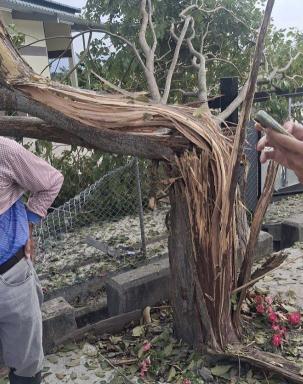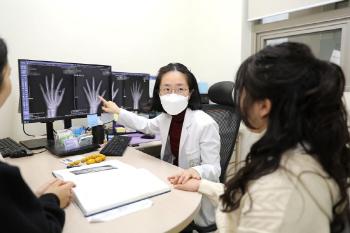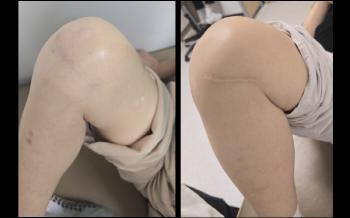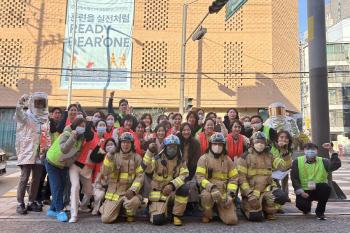The obesity rate of middle and high school students continues to increase, but physical activity is in place...A variety of school-based programs should be considered
Over the past decade, the obesity rate of adolescents has increased, and physical activity has remained in place.
In the 457th issue of the "Health and Welfare Issues and Focus" published by the Korea Institute for Health and Social Affairs on the 7th, Kim Soo-kyung, an associate researcher at the Health and Security Policy Research Institute, pointed out that while the obesity rate of middle and high school students in Korea has been on the rise over the past decade, the rate of physical activity practice for 60 minutes a day, more than 5 days a week, is only 25.1% for boys and 8.9% for girls as of 2024, which is still low. In the same survey in 2015, male students recorded a physical activity practice rate of 20.5% and female students recorded a physical activity practice rate of 7.4%.
During the same period, the obesity rate increased from 8.8% to 15.5% for male students, and from 6.1% to 9.2% for female students.
Deputy Researcher Kim said "Physical activities are related to students' overall lifestyle, so there is a limit to activating physical education and sports activities alone. The policy that students' physical strength, physical activity, and health level will be resolved if school sports are activated has an aspect that makes student health recognized as the sole responsibility of the education authorities, such as the Ministry of Education, the Office of Education, and schools, and the lack of space, facilities, manpower, and strategies to induce interest should be considered as a problem. Various environments inside and outside the school should be made suitable for adolescents' physical activities," he stressed.
For example, schools can consider a 'home linkage method' that provides physical activity homework at home and supports programs to be with students at home, or a 'local linkage method' in which schools provide physical education programs to all students and local health centers manage obese students through Saturday sports programs. He explained that it is also possible to consider a method of recruiting external physical activity experts to provide physical activity programs to low-fit students.
As a task for revitalizing school-based physical activities for children and adolescents, Deputy Researcher Kim needs to apply a 'school-based'school-based' approach that utilizes resources outside the school, such as homes and communities, while maintaining the strengths of the school," he stressed. In addition, it is necessary to link with existing schools, sports clubs, etc. by utilizing the original purpose of the Physical Activity Promotion System (PAPS), which is designed as a system that combines physical measurement and prescription. In addition, the measurement results need to be used to evaluate the effectiveness of sports and physical activity programs, and health authorities need to intervene to strengthen the role of manpower support and evaluation along with the composition of the program," he added.
In the 457th issue of the "Health and Welfare Issues and Focus" published by the Korea Institute for Health and Social Affairs on the 7th, Kim Soo-kyung, an associate researcher at the Health and Security Policy Research Institute, pointed out that while the obesity rate of middle and high school students in Korea has been on the rise over the past decade, the rate of physical activity practice for 60 minutes a day, more than 5 days a week, is only 25.1% for boys and 8.9% for girls as of 2024, which is still low. In the same survey in 2015, male students recorded a physical activity practice rate of 20.5% and female students recorded a physical activity practice rate of 7.4%.
During the same period, the obesity rate increased from 8.8% to 15.5% for male students, and from 6.1% to 9.2% for female students.
Deputy Researcher Kim said "Physical activities are related to students' overall lifestyle, so there is a limit to activating physical education and sports activities alone. The policy that students' physical strength, physical activity, and health level will be resolved if school sports are activated has an aspect that makes student health recognized as the sole responsibility of the education authorities, such as the Ministry of Education, the Office of Education, and schools, and the lack of space, facilities, manpower, and strategies to induce interest should be considered as a problem. Various environments inside and outside the school should be made suitable for adolescents' physical activities," he stressed.
For example, schools can consider a 'home linkage method' that provides physical activity homework at home and supports programs to be with students at home, or a 'local linkage method' in which schools provide physical education programs to all students and local health centers manage obese students through Saturday sports programs. He explained that it is also possible to consider a method of recruiting external physical activity experts to provide physical activity programs to low-fit students.
As a task for revitalizing school-based physical activities for children and adolescents, Deputy Researcher Kim needs to apply a 'school-based'school-based' approach that utilizes resources outside the school, such as homes and communities, while maintaining the strengths of the school," he stressed. In addition, it is necessary to link with existing schools, sports clubs, etc. by utilizing the original purpose of the Physical Activity Promotion System (PAPS), which is designed as a system that combines physical measurement and prescription. In addition, the measurement results need to be used to evaluate the effectiveness of sports and physical activity programs, and health authorities need to intervene to strengthen the role of manpower support and evaluation along with the composition of the program," he added.
|
This article was translated by Naver AI translator.




